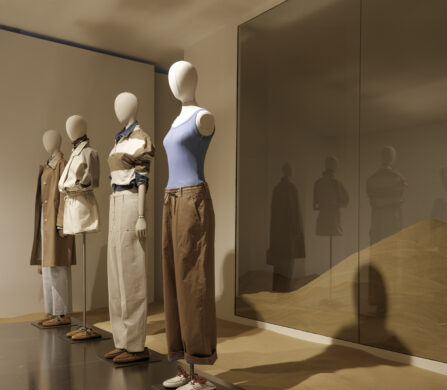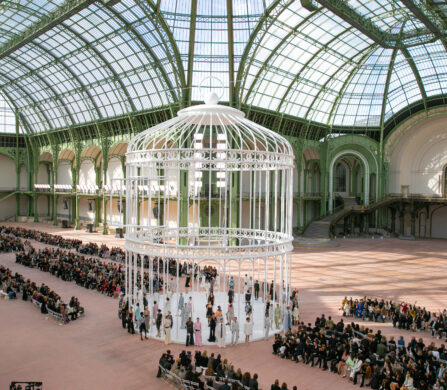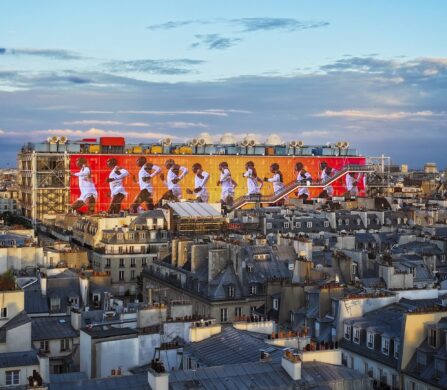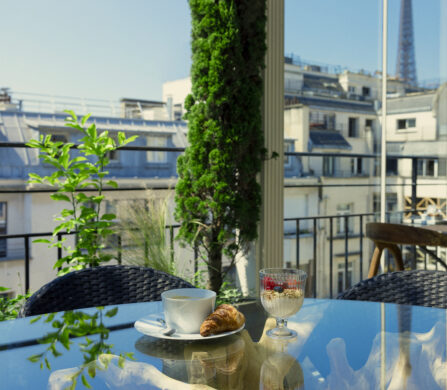
Left: Stephen Antonakos, Hanging Neon, 1962. Métal peint, néons. 152,5 × 112 × 53,5 cm. Collection particulière. © 1965 Stephen Antonakos
Right: Francisco Sobrino. Transformation Instable Juxtaposition Superposition, 1963-2011. Plexiglas transparent teinté, 170 × 170 × 340cm. Archives de la famille Sobrino. © Archive Francisco Sobrino
Since the early 20th century until now, artists have explored the representation of movement, usage of light, various approaches to vision, and the manipulation of space. The exhibition “Dynamo” at the Grand Palais in Paris showcases a century’s worth of kinetic art that challenges ordinary perceptions on art.
Dynamo features a combination of paintings, reliefs, and sculptures that activates our retinas and forces us to engage in the work itself. These kinetic artists want viewers to influence the art’s condition thereby altering its appearance. Just as much as we question the capability of our senses, some works question their limits as objects through their own translucence and immateriality. In addition, the element of time constantly appears throughout the exhibition. The movement that participants make from walking from one side of a sculpture to another dramatically alters the artwork’s state. In other cases, the opposite occurs. One series of paintings highlights repeatedly overlapping or marginally off-set circles. This produces a quivering effect and makes the originally static painting one of movement. The eye, instead of the painting, has become the centre of our attention.

Carsten Höller
Light Corner
2001
Bulbes lumineux, programmateur
192 × 98 cm (chaque)
Paris, CNAP, Centre national des arts plastiques,
inv.Fnac 04-186
© Centre national des arts plastiques
© Adagp, Paris 2013
Contemporary artists such as John Armleder (VOLTES III) and Carsten Höller (LIGHT CORNER) dare to illuminate complete walls with neon lights or luminous bulbs. This fosters the notion that the optical, which was once a method of grasping reality, is now a path for powerful experiences of the creation and destruction of appearances. The artists create atmospheres that investigate our connection with space and remind us that perception is a form of interpretation.
The heart of the exposition, titled “Vision,” presents artwork from different moments in time in which the study of light, colour, and shape play a vital role. By taking scientific advancements in physics, psychology, and optics and weaving it into their designs, kinetic artists have expanded our idea of knowledge past the constricted range of our senses. The artworks entice the observer to participate and experience the capacity of vision in perceiving both appearance and disappearance.
The idea of space has inspired artists to do away with canvases and abandon sculpting in the traditional sense. Instead of expressing space, artists started to utilize it, enter it, and make it the focus of their work. Stephen Antonakos’s “Hanging Neon” is one of the first where simple, neon tubes were placed in a geometric configuration in a three-dimensional space containing the observers themselves.

John Armleder
Voltes III
2004
Néons blancs
350 x 600 cm
Zurich, Galerie Andrea Caratsch
© Galerie Andrea Caratsch, Zürich
Observers are completely immersed in Conrad Shawcross’s “Slow arc Inside a Cube IV” where a mechanised system of motors carries a single light across a gridded, steel box. This piece creates movement with shadows. The object itself is dematerialized and invades the space around it, casting the viewer in its projection.
Perhaps one of the most impressive works is Felice Varini’s “Vingt-trois disques évidés plus douze moieties et quatre quarts” that was specifically produced for the Dynamo exhibition. Varini used orange acrylic paint to form a series of dodecagons on the actual Grand Palais itself. As the viewer walks down the exterior corridor and into the art, he can see that the once perfect set of polygons break into fragments. Varini demonstrates that our field of vision is a volatile and continually active phenomenon.
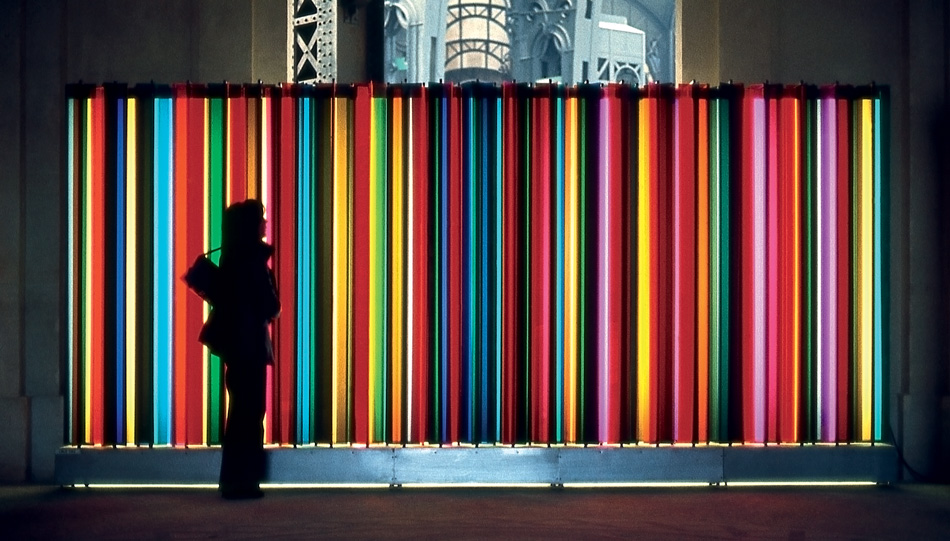
Carlos Cruz-Diez
Transchromie mécanique 1965
1965
Plexiglas, aluminium, moteur
Atelier Cruz-Diez
© Carlos Cruz-Diez
© Adagp, Paris, 2013
Dynamo confronts our received ideas about art and distorts our reality to capture infinity. Kinetic artists interact with shapes, colours, and observers in their creative process to generate a new level of the conventional art experience. The kinetic art in Dynamo raises questions, provides answers, and both enlightens and astonishes.
Dynamo is at the Grand Palais in Paris from now until July 22, 2013. For more info visit: www.grandpalais.fr/en/event/dynamo
Words / Sheri Chiu
Follow her on twitter @schiuonthis














